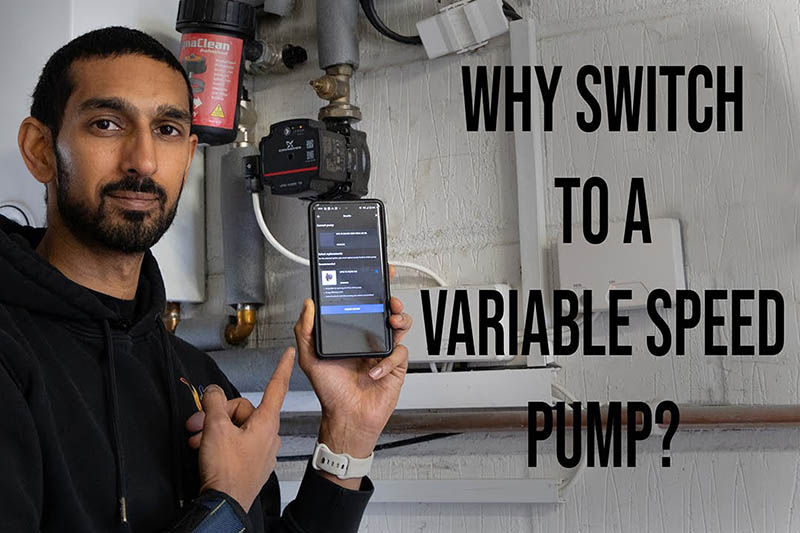
Chirag Panchal from CP Utility Solutions installed a new Grundfos UPS3 Variable Speed Pump, after using the Grundfos Go App to determine the correct replacement pump.
Although central heating pumps are a core component of heating systems, like any component, over time, they may fail, or simply not be sufficient to get enough heat around a house. This was the situation found by Chirag Panchal from CP Utility Solutions on a recent job, documented in a new video now available on the PHPI YouTube Channel.
In the video Chirag explains how the existing fixed speed pump was running weak, a problem he noticed when power flushing the system at a customer’s house. In the video he demonstrates how he used the Grundfos Go App to identify the correct replacement pump.
Chriag says: “Now with the number of pumps out there that Grundfos offer, it can be a little bit daunting to select the right one, especially now that they’re modulating. You want to get the one which is going to be the correct replacement for it. Easiest way to do it Grundfos have got their own app, the Grundfos Go app. Literally a few clicks, take a picture of the pump, and it will bring up the correct replacement for it to make sure that you’ve got the right pump for the right size of the system as well.”
Video: How to install a Grundfos variable speed pump – PHPI Online
Energy efficient
In the video Chirag also explains some of the reasons installers may want to consider swapping out fixed pumps for variable speed pumps.
“At the moment, a lot of modular systems are becoming pressurised systems or sealed systems. Now a fixed-speed pump, as the name suggests, is just running at one speed all the time. By changing to a variable speed pump this becomes a lot more energy efficient because what it does it determines the amount of pressure
there is in the system. Regardless of whether it’s a pressurised system, or an open venting system, it will then modulate the power down accordingly to make sure that the pump’s running in the most efficient way.”
Another issue he identifies is where on an open venting system a fixed speed pump is set too high. Chirag says: “ I’m having to deal with pump overrun where the system water is then pumping over into the F&E tank. The other issues that I’ve had with fixed-speed pumps is that if they are set too high, it can put a lot of stress on the existing pipe work. If you’ve got weak joints, whether it’s solder joints or compression joints, you can cause small weeps and small leaks, which you really want to avoid.”
Peace of Mind
Chirag notes that a further benefit of the new variable pumps from Grundfos is that they come with a five-year warranty rather than just a two-year warranty. The new pumps are also compliant with the new EEI regulations, which came into effect in 2013.
Set-up
After the installation Chirag explains how to set the correct pump settings to ensure the system runs efficiently. He explains: “To do it, you just keep the arrow button pressed for three seconds. And now you’ve got one green light flashing, and you’ve got the end amber light flashing. Now this is proportional pressure one. This is the minimum setting for the pump on an advertised system, let’s say a three-bedroom house or four-bedroom house, and it will allow the pump to then determine how much pressure there is in the system, and it will allow it to modulate its speed accordingly.”












